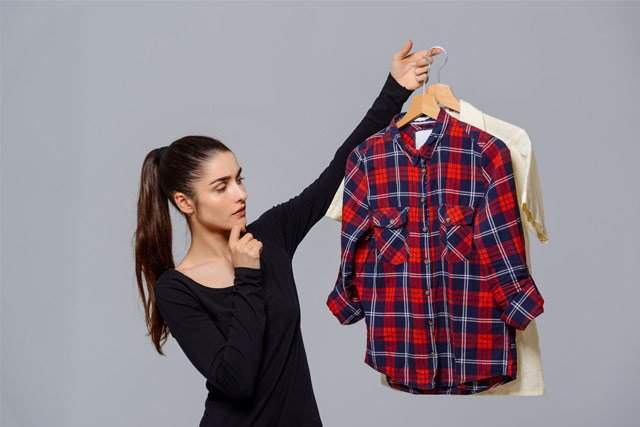Urban Outfitters has been a beacon for young adults seeking trendy clothing and accessories in the vibrant fashion world, where trends sway like autumn leaves. Consumers scrutinize their favorite brands more closely as the spotlight on environmental and ethical issues intensifies. In this exploration, we’ll delve into the heart of Urban Outfitters, assessing its embodiment of the fast fashion label, examining its sustainability efforts, and shedding light on its ethical practices.
1. What Makes a Fashion Brand Sustainable?

Before we unravel the intricacies of Urban Outfitters, let’s set the stage by understanding what constitutes a sustainable fashion brand. These brands prioritize:
- Minimizing environmental impact
- Implementing fair labor practices
- Utilizing ethically sourced materials, often favoring eco-friendly fabrics such as organic cotton, recycled polyester, and sustainable fibers.
2. Unveiling Urban Outfitters

2.1 Overview
Urban Outfitters, founded in 1970 and headquartered in Philadelphia, Pennsylvania, has evolved into a global brand with over 200 stores worldwide. Operating under a more extensive retail group that includes Free People and Anthropologie, Urban Outfitters curates a unique blend of clothing, accessories, and home goods.
3. Is Urban Outfitters an American-Made Company?

3.1 Global Sourcing
While proudly bearing the tag of an American brand, not all Urban Outfitters products are made in the USA. The company strategically sources globally, tapping into diverse materials and styles from countries like China, India, and Bangladesh. While enabling cost efficiency, this approach poses challenges regarding transparency and ethical production.
4. Eco-Friendly Initiatives

4.1 Urban Renewal Collection
Urban Outfitters has made commendable strides in incorporating recycled materials into its product lines. The Urban Renewal collection, a testament to these efforts, features items crafted from recycled cotton, polyester, and other sustainable materials. Despite this, concerns linger about the brand’s overall commitment to sustainable practices compared to industry peers.
Read Also: Is Aritzia Fast Fashion
5. Fast Fashion or Not?

5.1 Trendy at a Cost
Urban Outfitters aligns itself with the fast fashion paradigm, emphasizing trendy styles at affordable prices. This model’s rapid turnover of collections contributes to higher production volumes, escalating environmental impact, and textile waste. The brand’s commitment to staying on trend raises questions about its broader impact on our planet.
6. Ethical Considerations

6.1 Commitments and Evidence
Urban Outfitters has expressed commitment to improving its ethical practices. However, concrete evidence supporting these claims is elusive. The lack of clarity on whether workers receive a living wage, enforcement of fair trade policies, and adherence to ethical guidelines by suppliers raises ethical concerns.
7. Towards Sustainability

7.1 Progress and Goals
While incorporating eco-friendly materials and supporting independent artists, Urban Outfitters’ overall commitment to sustainability falls short of some competitors. According to URBN, by 2023, the company aims for 50% of its direct-sourced raw materials to be obtained ethically through recycled materials or sustainably sourced virgin fibers.
8. Labor Practices

8.1 Global Workforce
Like its counterparts, Urban Outfitters relies on a global workforce for production. Despite commitments to fair labor practices, details about the supply chain and working conditions remain limited. Clarity on whether employees receive a living wage is conspicuously absent.
9. Animal Welfare

9.1 Policy and Oversight
Urban Outfitters has an animal welfare policy prohibiting the use of exotic animal skin and fur. However, the stance on materials like leather and wool remains unclear. Additionally, the level of oversight regarding compliance with animal welfare standards among suppliers is uncertain.
Read Also: Is Emmiol Fast Fashion
10. Boycotts and Customer Concerns

11. A Shift in Consciousness
Boycotts against Urban Outfitters are gaining momentum due to concerns about environmental and ethical practices. From non-organic cotton usage to lower sustainability ratings, customers increasingly seek alternatives that align with their values.
12. Quality Quandaries

12.1 Decent, Not Exceptional
While generally considered decent, Urban Outfitters’ clothing may not stand out for exceptional quality. The use of non-organic cotton and a focus on fast fashion compromise durability, prompting environmentally conscious consumers to explore alternatives.
13. Competitive Landscape

13.1 American Eagle as a Beacon
In the realm of sustainability, American Eagle emerges as a notable competitor. Renowned for its commitment to the environment and high-quality outdoor clothing, American Eagle is a popular choice for consumers seeking environmentally conscious alternatives.
14. Our Ratings
| Criteria | Rating |
|---|---|
| Transparency | 7/10 |
| Fair Labor | 7/10 |
| Sustainably Made | 7/10 |
| Vegan & Cruelty-Free | 7/10 |
| Overall Rating | 7/10 |
Conclusion
Urban Outfitters, a beacon for the fashion-forward, stands at a crossroads of change. While commendable strides have been made toward sustainability and ethical practices, substantial room for improvement remains. The lack of transparency, unclear ethical practices, and a focus on fast fashion raise questions about the actual cost of stylish purchases. As Urban Outfitters charts its course through the shifting landscape of conscious consumerism, the path toward a more sustainable and ethical future beckons—a transformative journey that may redefine its role in the fashion industry.


